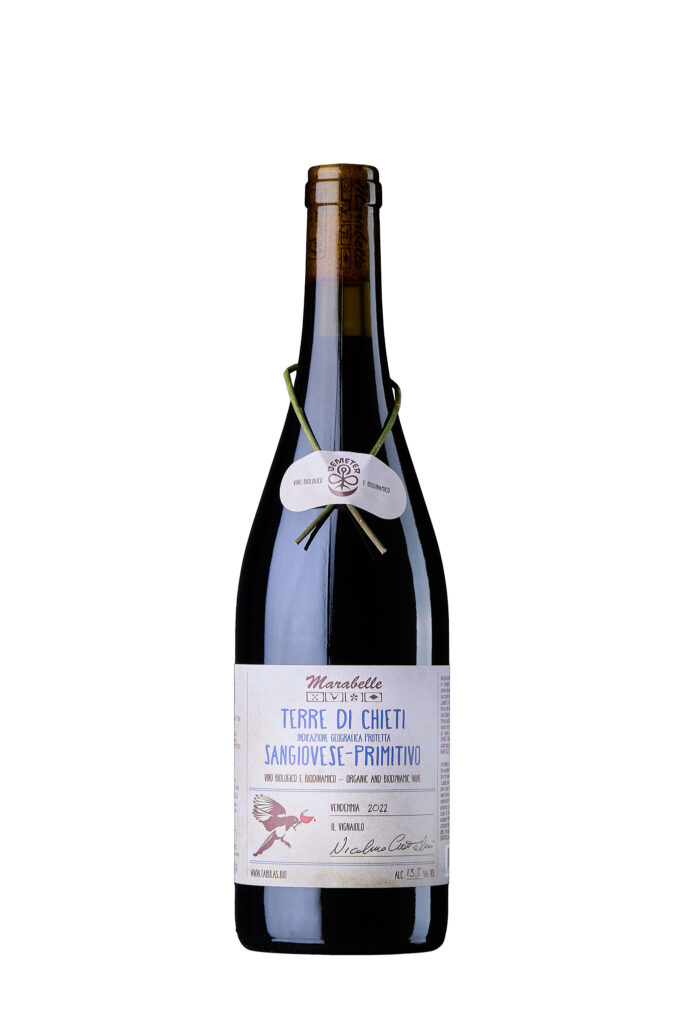
Sangiovese Primitivo
SIGHT vibrant ruby red color
GRAPES Sangiovese and Primitivo minimum 20%
PRODUCTION AREA municipality of Canosa Sannita, at 300 M A.S.L. exposed to southeast. The vineyards are located in the agricultural landscape at the slope of the Majella Park where the millennial presence of men has preserved an agricultural biodiversity elsewhere disappeared.
HARVESTING handpicked in wooden boxes and in willow and cane basket.
SOIL The soils are of medium mixture tending to calcareous and have retained their natural fertility thanks to the poor exploitation of the soil by man.
IN THE VINEYARD Marabelle vineyard is an element of great agronomic and naturalistic value. The sheeps provide the natural and smart control of native spontaneous flora and the natural fertilization bringing the animal spirit in the vineyard. Machining is minimized. From the location of the vineyards on one side of the mountain it is easy to understand that from a phytosanitary point of view the plants require little intervention and they are related only to the use of copper and sulfur.
GRAPE ORIGIN Sangiovese grape probably has etruscan origins: it seems to come from the area north of the tevere river and south of arno river, It then spread beyond the appenino, up to the romagna and emilia hills. sangiovese considerably changes its expressive characteristics as the climates and the altitude to which it is cultivated vary. Primitivo, on the other hand, Seems to have dalmatian origins. it is widespread throughout southern italy and especially in Puglia, in the area of manduria. its name originates from the precocious ripening of the grapes.
IN THE CELLAR Maceration takes place in tanks with manual pumping over and punching down. Fermentation is carried out in cement tanks for a period of 15-25 days depending on the temperature and the ripening of the grapes. aging is mixed: part of the wine is kept for six months in barrique and the other part in stainless steel tanks, so that both the fruit (tank) and the roundness on the palate (barrique) are preserved. aging in bottle for about 6-8 months follows.
NOSE plum, carob and cherry notes
MOUTH tannic, intense, with a finish of red fruit jam.
TEMPERATUERE SERVICE 14-16°c
